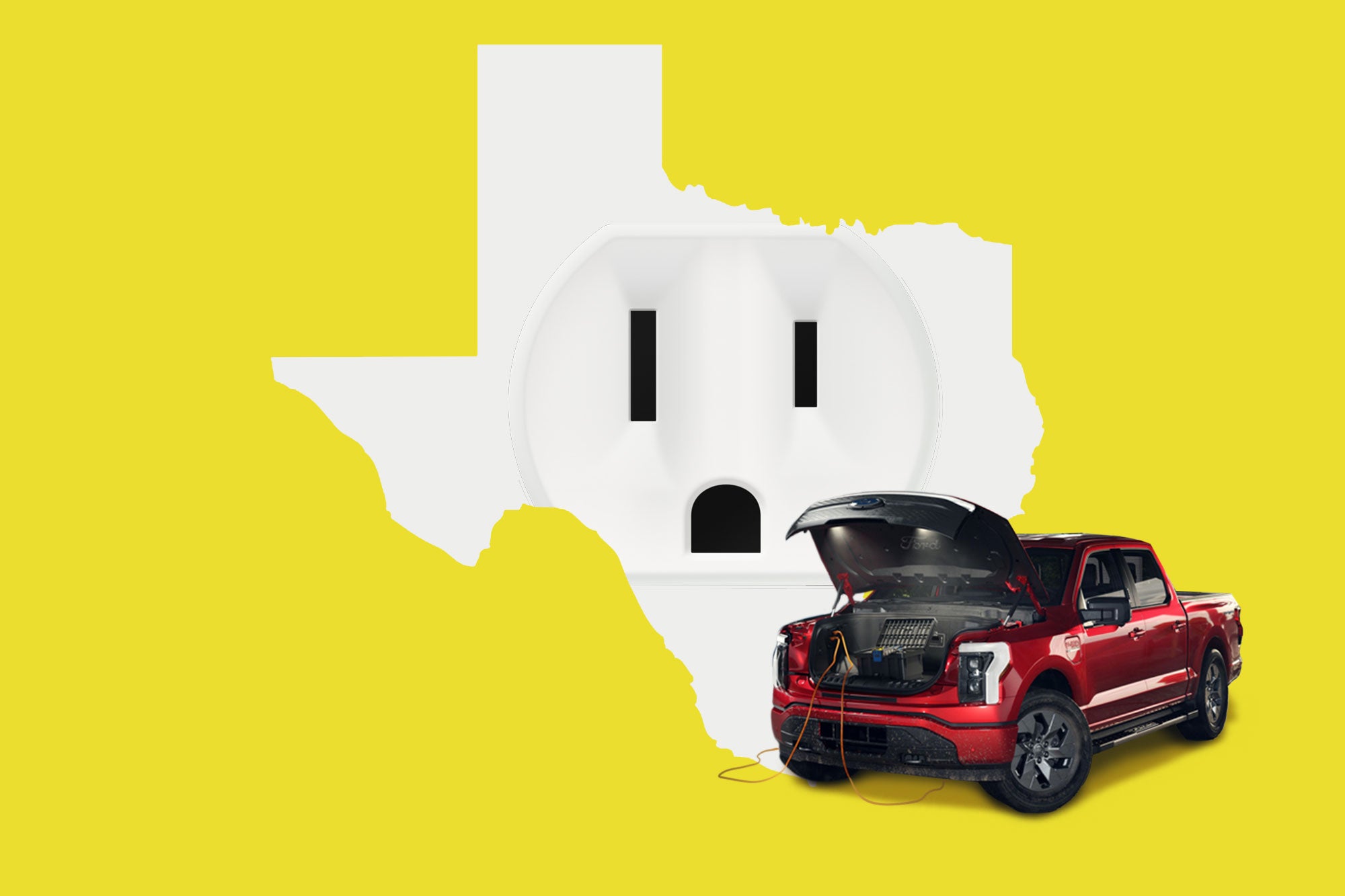After Hurricane Beryl left more than 2 million people without power in Houston last week, Ford CEO Jim Farley noticed something interesting: Hundreds of F-150 owners in the Houston area were suddenly using their trucks to generate electricity.
Ford calls this system Pro Power Onboard, and it’s been marketed mostly as a way to run power tools in the field, in true car-commercial fashion. Let’s say you’re out on some rugged outcropping and you need to jump on your jackhammer for a few minutes. No problem.
But last week, it seemed, Houston-area drivers were suddenly using their cars to pinch-hit for their hapless local electricity provider. It’s a phenomenon that the company first noticed during the 2021 Texas ice storms and saw again last summer, when tornadoes hit Michigan, according to Mike Levine, Ford’s comms director. But the scale of the Houston blackout has coincided with the rise of Ford’s F-150 Lightning. Not only can the company’s massive electric truck put out four times as much power as the older gas-fueled models, but it can do so without noise or pollution for days at a time.
At present, most Houstonians who generate their own current after disasters (the city has seen more than its fair share) do so with diesel generators. But those are loud, dirty, dangerous, and expensive—creating a postdisaster “generator divide” between rich and poor neighborhoods. What if those generators one day yield to a world of electric vehicles, instant power sources at practically every suburban home?
“The use of an EV for disaster response, especially for residences, has been theorized for a long time,” observes Scott Shepard, director of EV research at the Center for Sustainable Energy, a nonprofit research group. After Japan’s earthquake-tsunami disaster in 2011, early electric vehicles played a key role in the recovery. But it has taken a while for EV manufacturers to adopt “bidirectionality,” making it easy to feed car power back to a fridge, a home, or the grid.
At the vanguard here, surprisingly enough, is the familiar yellow school bus. Vermont has purchased a fleet of electric school buses to serve as mobile power sources in the event of a blackout. What’s more, the vehicles can help deliver a little extra juice to the grid in the summer, taking the weight off dirty “peaker plants” called into service on hot days.
“Many people who work in the space have been captivated by that big vision, that electric vehicles will be part of the power grid in the U.S.,” says Jeff Allen, the head of Forth, a Portland-based electric-mobility think tank. Wind and solar power tend to deliver lots of energy on windy and sunny days, but little on still or cloudy days, presenting a challenge for power companies that need to send out essentially the same amount of energy regardless of the weather. “We have a lot of renewables. We need a lot of storage. We’re already paying for it—it’s just they’re on wheels.” Conveniently, these wheeled bundles of energy spend 95 percent of their time parked.
It’s hard to know how many people are using EVs as backup power sources during blackouts. Ford has data only for customers who choose to share it; I’ve also heard reports of Houstonians powering their homes with Kias, Cybertrucks, and Rivians. Earlier this year, an Australian mom powered her son’s dialysis machine through a Christmas blackout with her Chinese-made BYD electric vehicle.
Inspiring stuff. But as useful as a bunch of mobile batteries might be in a disaster, the larger hope is that self-interest will motivate drivers to integrate their cars into the grid. It’s one thing to plug your AC unit, fridge, and television into your car during a blackout, but it’s quite another to have your EV set up to power your whole home or even feed back into a flagging power system. This stopgap postdisaster setup, Shepard says, is a “beachhead” to full bidirectionality. Or, in plain English, a world where tens of millions of electric vehicle batteries provide the flexible storage capacity that renewable energy requires.
In California, for example, the state Senate has considered requiring EVs to be bidirectional. Meanwhile, the beleaguered utility PG&E has installed thousands of free transfer meters, which make it easy to switch your home’s power source from grid to generator or EV. That’s obviously useful when the power goes out, but users with transfer meters could also one day be paid to preemptively remove themselves from the grid during moments of peak power demand, so that no one’s ice cream melts.
The next step would be to harness those vehicles to feed the grid (another PG&E pilot project). In 2023, for example, San Diego used its electric school buses to power hundreds of homes during the day and recharged them when energy demand was lower at night. A number of countries have similar trials underway to establish vehicle-to-grid networks.
Saving the grid may not be a reason to set up your pickup truck as an alternative home energy source. But saving yourself from the grid? A little self-interest goes a long way.
